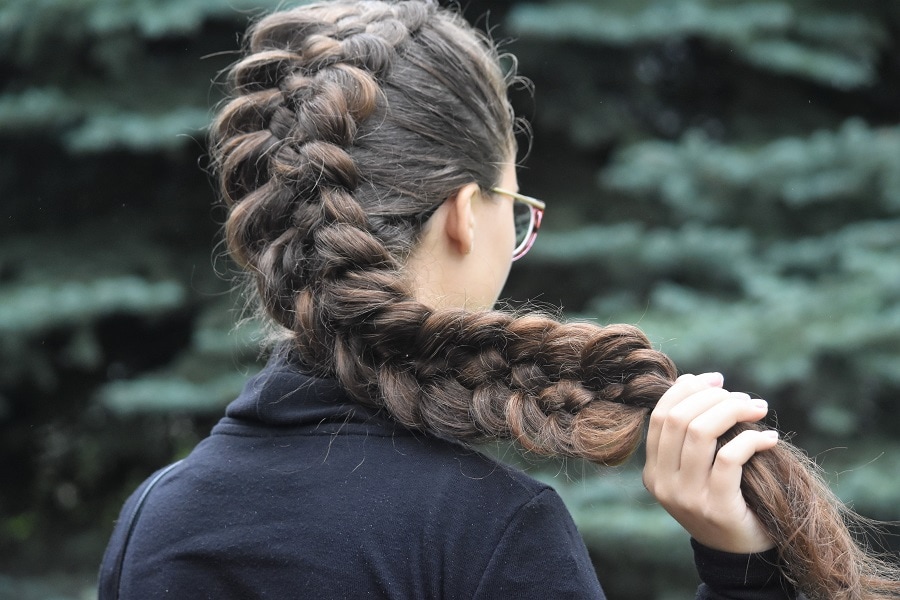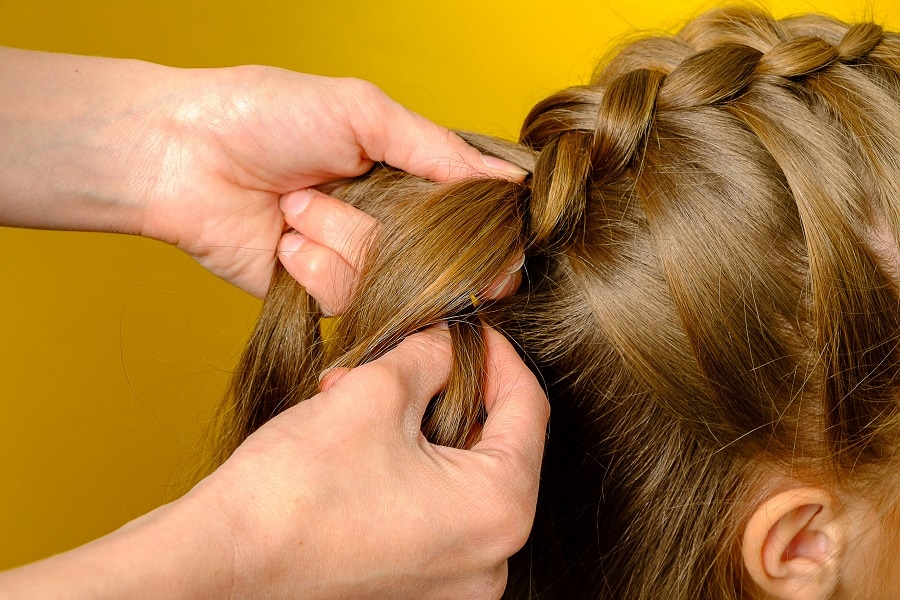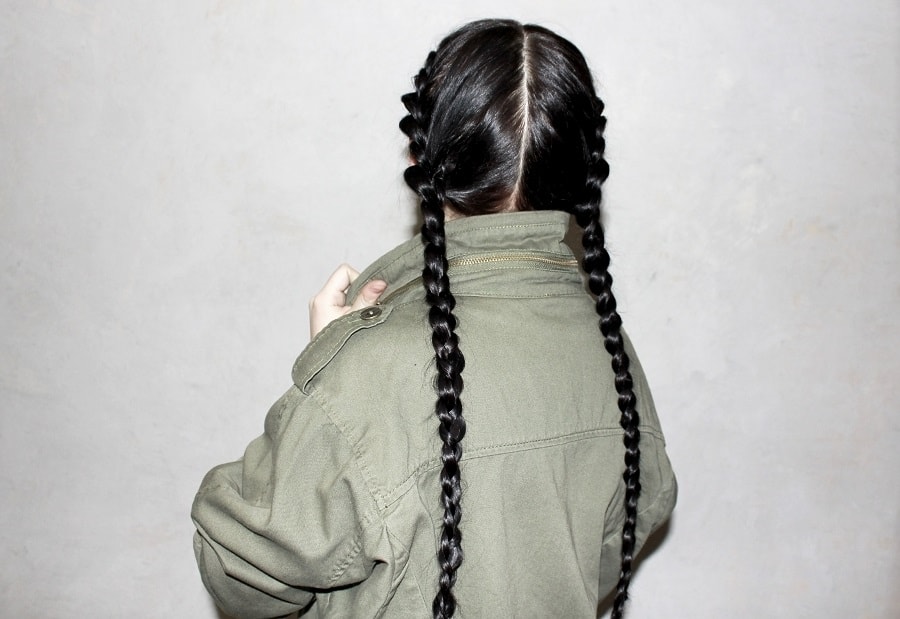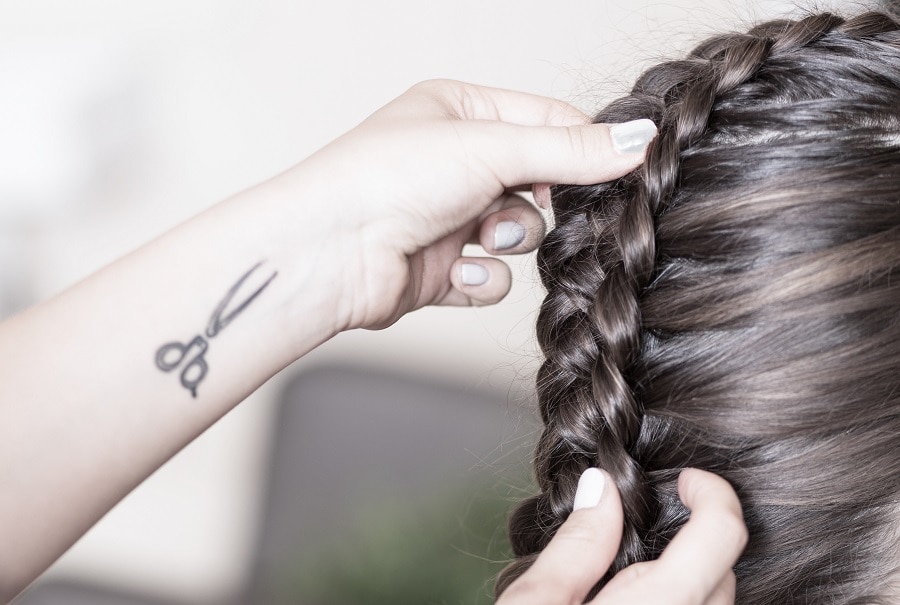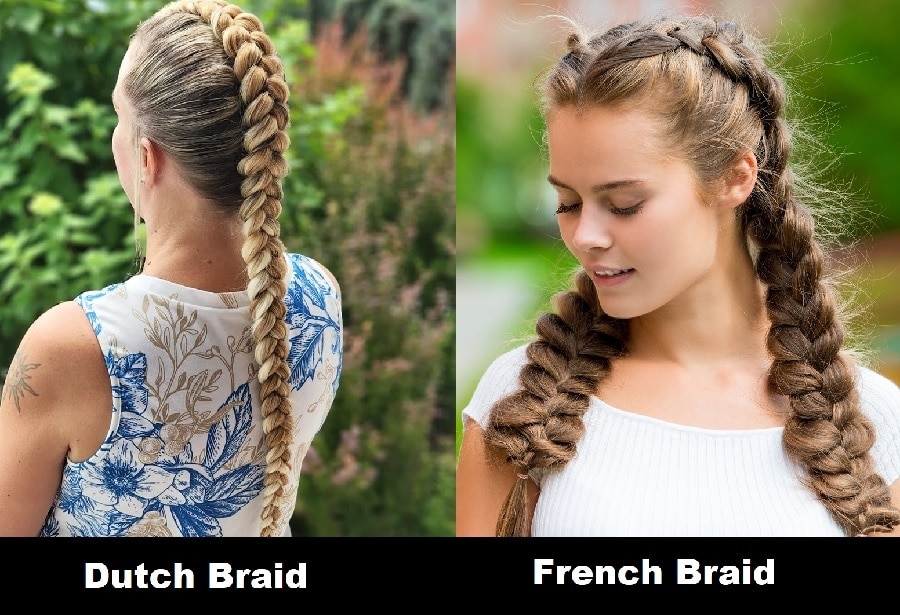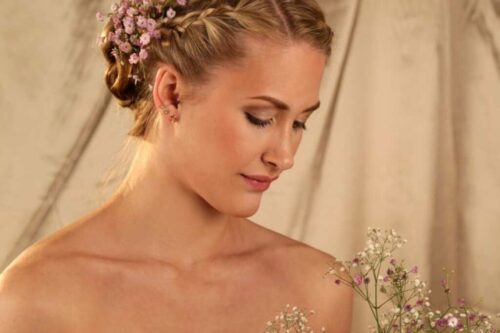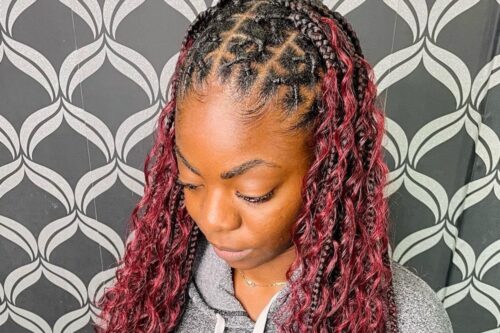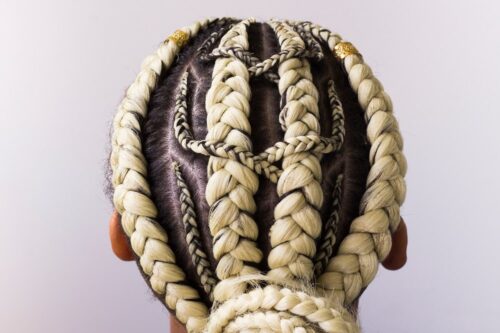Confused between Dutch braid vs. French braid? No matter what the occasion is, you’ll find a braided hairstyle for each of them.
Moreover, the best part about them is that they are easy to style, and anyone can pull off a braid. From a five-year-old to a fifty-year-old, a braided hairdo exists for everyone. And among the most traditional braided styles are Dutch and French braids.
Although the braiding techniques of these two styles might be intimidating at first, this guide will help you differentiate between dutch braids and french braids.
What Is a French Braid?
The French braid is believed to be first used by Greeks and Africans where three sections of hair strands are braided together, starting from the crown region.
In other words, the pattern of this style involves crossing the left strand over the middle strand, the right strand over the middle strand, and repeating the same.
As you braid, make sure to take another piece from the respective side of the braid. Continue following this pattern until you reach the nape of the neck. At this point, the complex part is over, and you just have to follow a basic braid next.
This type of braid can be done either in pigtails or as a single braid. The French braid is quite different from a basic braid. The end result here is smooth and tight, incorporating all your hair.
How to Do a French Braid
Here is a step-by-step guide as to how to create the look.
Step 1: Begin by brushing your hair to remove tangles, as tangles can make it difficult to braid. Next, add dry shampoo to remove oil as soft hair may come apart while braiding. Finally, if your hair is clean, you can make use of a texturizing spray as it will give a little grip on your hair and make it easier to braid.
Step 2: At the crown of your head, take three strands and begin by braiding a row or two of basic braid, i.e., crossing the left strand over the center and then the right strand over the center.
Step 3: Continue doing this by bringing in pieces from the sides. In order to create two French braids, you can center part of your hair and then follow the same process. While, for cornrows, you can split the hair into as many segments as you want.
A lifted-up or undone French braid can also be very stylish. Just tie the end with a cute ribbon, and you’re done.
What Is a Dutch Braid?
In contrast to a French braid, a Dutch braid does not look like a cascading braid. It looks like a single braid with hair, where three sections of hair are braided neatly underneath.
You can think of a Dutch braid as a reverse French braid, wherein the left and right strands are brought underneath the center part, creating a single braid that pops up.
Like the French braids, these braids can also be double braided and are often known as boxer braids.
Suggested For You
- Try These Braids For Short Hair
- African Braids
- Braided Hairstyles For Dark Skin
- Knotless Box Braids
- Lemonade Braids
How to Make a Dutch Braid
Step 1: To make a Dutch braid, you have to follow the same steps as a French braid, with one key difference, i.e., you have to bring the outside piece under the middle piece.
Step 2: Apart from this, all the steps remain the same. For example, in a Dutch braid, you also have to start by braiding one or two rows traditionally and then braid in new hair sections. Then, continue braiding it underneath till you reach the nape of the neck.
Quick Tip: In order to make your Dutch braid pop, you can slightly loosen and lift the braided sections. Then, make a clean Dutch braid; if any strands pop up, just secure a Bobby pin and hairspray to tuck it back in place.
Difference Between Dutch Braid and French Braid
- Until now, you must have understood the concept of Dutch vs French braid concept. The main difference is that a French braid crosses over, while a Dutch braid crosses underneath the middle section. That is why the Dutch braid is also known as “reverse French braid” or “inside-out braid.”
- The French braid gives a flat appearance, while a Dutch braid gives off a 3D impression. In addition, a French braid is much more smooth, while a Dutch braid creates a thick bunch in the middle. Thus, they both have various similarities and differences but give off a distinct, impressive look when finished.
- Although none of them is much easy, if you are a beginner, you may want to start with a french braid. Once you get comfortable with the braiding motion, it’ll get easier. The more you start braiding, the more perfect and faster it will come out.
- These braids can be worn in different ways to suit both formal and casual events. For example, you can wear it to a formal meeting as well as to a wedding. In addition, by adding certain flowers or bead accessories to these braids, you can make them look more beautiful and elegant.
If you’re worried about whether your french or dutch braid will stay the same after-hours, then you’re not the only one concerned about this. If you have a hairspray, then perfect. All you need to do is use the hairspray all over your head when you’re done making your braids. This way, the braids will stay perfect even after hours.
Both Dutch braids and French braids are great and whichever you attempt, remember that you will be able to perfect the art with practice.
Whether you are going on a girl’s night out or attending your sister’s wedding, one thing will remain with you, and that is your braids. Don’t be afraid to try out these hairstyles, as they will surely look gorgeous.

